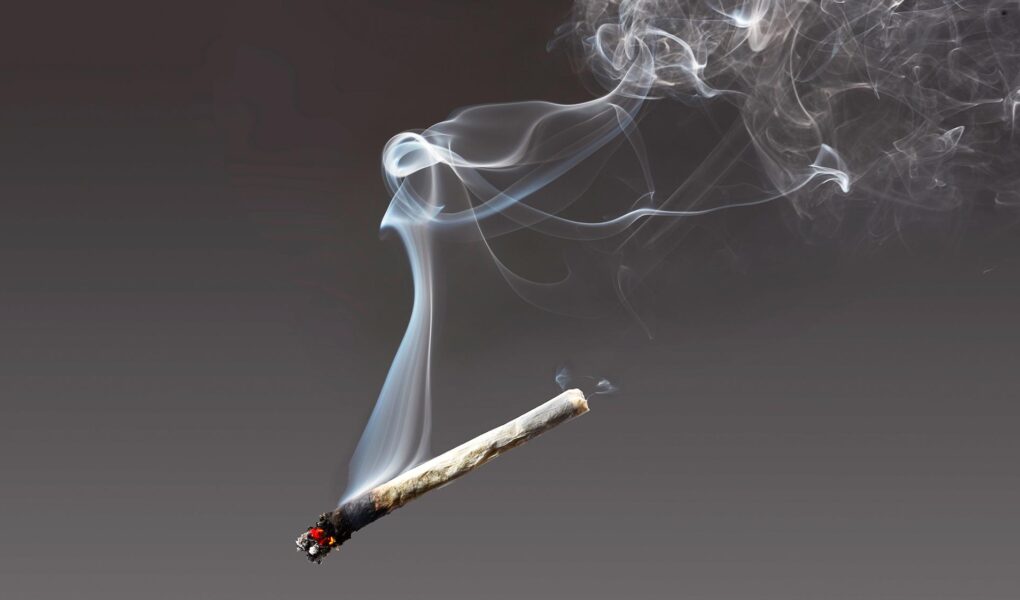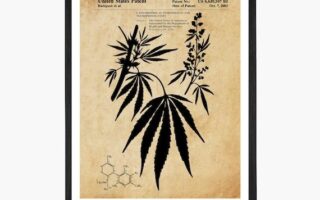In the swirling mists of cultural transformation, few substances have captured the public’s imagination quite like cannabis. Once shrouded in stigma and prohibition, its emergence into the spotlight has prompted a profound re-examination of its properties, effects, and uses. At the heart of this conversation lies cannabis smoke—a product of combustion that offers an intricate blend of ritual, relief, and exploration. What are the constituents of this familiar yet complex byproduct? How does it interact with our bodies and environments? As we delve into the multifaceted realm of cannabis smoke, we embark on a journey to uncover the scientific truths and societal perceptions surrounding this ancient plant. Here, we seek to illuminate not only its chemical makeup and health implications but also its role in cultural practices and personal experiences. Join us as we unravel the smoke and delve deeper into the narratives that intertwine with the essence of cannabis.
Table of Contents
- Understanding the Chemical Composition of Cannabis Smoke
- The Impact of Cannabis Smoke on Respiratory Health
- Strategies for Reducing Harm from Cannabis Consumption
- Exploring Alternative Methods for Cannabis Ingestion
- Q&A
- The Conclusion
Understanding the Chemical Composition of Cannabis Smoke
The smoke produced by burning cannabis is a complex mixture of various compounds that arise during combustion. Understanding this mixture is vital for both users and researchers as it holds implications for health effects, flavor profiles, and therapeutic benefits. The key components include:
- Cannabinoids: The primary active compounds, such as THC and CBD, which interact with the body’s endocannabinoid system.
- Terpenes: Volatile compounds that contribute to the aroma and flavor, including myrcene, limonene, and pinene.
- Carcinogens: Byproducts of burning organic material, such as tar and benzene, which may pose health risks.
- Particulate Matter: Tiny particles that can affect respiratory health when inhaled.
- Other Chemicals: A plethora of other compounds, including phenols and aldehydes, that emerge during the smoking process.
A well-rounded analysis of cannabis smoke necessitates examining the ratio of these components, as the effects and experiences can vary dramatically based on strain and preparation method. For instance, specific strains may yield higher levels of certain terpenes, enhancing flavor and aroma while potentially influencing therapeutic outcomes. The following table highlights the differences between the compounds typically found in cannabis smoke:
| Compound Type | Examples | Effects |
|---|---|---|
| Cannabinoids | THC, CBD | Psychoactive effects, pain relief |
| Terpenes | Myrcene, Limonene | Anti-inflammatory, mood enhancement |
| Carcinogens | Tar, Benzene | Potential respiratory harm |
| Particulate Matter | Dense smoke particles | Increased respiratory irritation |
The Impact of Cannabis Smoke on Respiratory Health
Cannabis smoke encompasses a range of compounds, and its effects on respiratory health have sparked considerable debate among researchers and health professionals. While some users advocate for the therapeutic benefits of cannabis, the act of smoking can introduce harmful elements to the lungs. Regular exposure can lead to a series of respiratory issues, including but not limited to:
- Chronic Bronchitis: Inflammation of the bronchial tubes leads to coughing and production of phlegm.
- Airway Irritation: Irritants in cannabis smoke can trigger symptoms such as wheezing and shortness of breath.
- Decreased Lung Function: Long-term use may compromise lung function, affecting overall respiratory health.
- Increased Risk of Infections: The smoke can impair the immune response in the lungs, making users more susceptible to respiratory infections.
It’s crucial to highlight that the method of consumption can significantly influence health outcomes. For instance, those opting for vaporization or edibles might mitigate some of the risks associated with direct smoking. A comparative analysis reveals the following:
| Consumption Method | Impact on Respiratory Health |
|---|---|
| Smoking | Increases risks of lung irritation and long-term damage. |
| Vaporizing | Reduces the intake of harmful tar and chemicals. |
| Edibles | No direct impact on respiratory health. |
Strategies for Reducing Harm from Cannabis Consumption
To minimize the adverse effects associated with cannabis smoke, users can adopt several prudent practices that enhance both safety and enjoyment. One effective approach is to opt for vaporizers or edibles instead of traditional smoking methods. By using these alternatives, users significantly reduce the inhalation of harmful toxins and carcinogens commonly found in smoke. Additionally, taking smaller doses can help manage the overall impact on health, allowing users to gauge their reactions without overwhelming their bodies. Other strategies include choosing high-quality cannabis strains that are tested for contaminants and organically grown products, which can decrease the likelihood of respiratory issues.
Creating a controlled environment for consumption can also contribute to harm reduction. Implementing the following practices may provide a safer experience:
- Prefer natural lighting: This can enhance mood and reduce reliance on artificial environments that may exacerbate anxiety.
- Stay hydrated: Drinking water before, during, and after consumption helps mitigate dry mouth and other discomforts.
- Limit exposure to irritants: Keeping the smoking area free from pollutants like dust and strong odors can ensure a more pleasant session.
Furthermore, engaging in mindful practices, such as setting intentions or utilizing breathing exercises prior to consumption, can promote a healthier mindset and help alleviate potential paranoia or anxiety. By incorporating these strategies into the consumption routine, individuals can significantly lessen the risks associated with cannabis smoke, fostering a more responsible and enjoyable experience.
Exploring Alternative Methods for Cannabis Ingestion
The world of cannabis ingestion is vast and ever-evolving, with many users exploring innovative methods beyond traditional smoking. One popular alternative is vaporization, which heats the cannabis at lower temperatures, producing a vapor that is less harsh on the lungs while still delivering cannabinoids effectively. Other methods include edibles, which offer a discreet and often delicious way to consume cannabis, allowing for longer-lasting effects and a different experience altogether. Additionally, topicals and tinctures provide users with localized relief or a swift onset of effects without the inhalation aspect, catering to those who may prefer to avoid smoke altogether.
For the adventurous, there’s also the rising trend of infused beverages, ranging from sparkling waters to herbal teas, created to offer a refreshing and enjoyable experience. This can be particularly appealing for social settings where traditional smoking might not be ideal. Moreover, some users are turning to sublingual strips or lozenges, which dissolve under the tongue for fast absorption and convenience. Each method comes with its own unique set of benefits, allowing users to tailor their experience according to lifestyle and personal preference, ultimately redefining how cannabis is enjoyed.
Q&A
Q&A: Understanding Cannabis Smoke
Q: What is cannabis smoke?
A: Cannabis smoke is the byproduct produced when the cannabis plant’s flowers are combusted, typically in a joint, pipe, or bong. The process releases a mixture of gases, particles, and compounds, including tetrahydrocannabinol (THC), the psychoactive component responsible for the “high,” as well as various other cannabinoids, terpenes, and potentially harmful substances.
Q: How does the composition of cannabis smoke differ from tobacco smoke?
A: While both cannabis and tobacco smoke contain similar harmful constituents due to the combustion process, cannabis smoke differs in its chemical composition. For example, cannabis smoke has higher levels of certain cannabinoids and terpenes, which can impart unique flavors and effects. However, both types of smoke have been linked to respiratory health concerns.
Q: Are there any health risks associated with inhaling cannabis smoke?
A: Yes, like any form of smoke inhalation, cannabis smoke can irritate the lungs. It contains tar and carcinogens, which may affect respiratory function over time. Some studies suggest a potential link to bronchitis symptoms. However, more research is needed to fully understand the long-term health effects of cannabis smoke.
Q: Can cannabis smoke affect mental state?
A: Yes, when inhaled, cannabinoids are rapidly absorbed into the bloodstream, allowing for a quick onset of effects. THC can alter perception, mood, and cognition. While some users report relaxation and euphoria, others may experience anxiety or paranoia, depending on the strain and individual tolerance.
Q: Is there a way to consume cannabis without smoke?
A: Absolutely! Alternatives to smoking include vaporization, edibles, tinctures, and oils. These methods can help avoid the risks associated with inhaling smoke and provide a different experience in terms of potency and duration of effects.
Q: Can the method of cannabis smoke consumption make a difference?
A: Yes, the method of consumption can significantly influence both the experience and health impacts. For instance, methods like using a water pipe may cool and filter the smoke, potentially making it easier on the lungs. However, the overall health risks of inhalation still remain.
Q: What should a novice user know about cannabis smoke?
A: New users should approach cannabis smoke cautiously. Understanding the strain’s THC levels, your own tolerance, and the method of consumption is important. It’s advisable to start with small amounts, preferably in a safe environment, to gauge how your body reacts before increasing your intake.
Q: Are there any legal considerations regarding cannabis smoke?
A: Yes, cannabis legality varies widely depending on the location. In some areas, cannabis is fully legal for recreational and medicinal use, while in others, it remains illegal. It’s also essential to be mindful of local regulations regarding public smoking.
Q: What future research may clarify about cannabis smoke?
A: Future research is likely to focus on long-term respiratory health outcomes, the benefits versus risks of THC and other cannabinoids in smoke, and exploring the potential medicinal uses of cannabis smoke versus other consumption methods. As legalization spreads, the understanding of cannabis smoke within public health will continue to evolve.
Conclusion:
Cannabis smoke is a complex subject, intertwining biology, legalities, and personal experiences. By understanding its components and effects, users can make informed choices about consumption. Whether one opts for smoking or alternative methods, awareness is key to a responsible relationship with cannabis.
The Conclusion
As we draw the curtain on our exploration of cannabis smoke, it’s clear that this subject is as complex as it is fascinating. From its chemical composition to its cultural implications, understanding cannabis smoke requires a nuanced approach that weighs both its potential benefits and risks. As perceptions continue to evolve and research advances, the conversation surrounding cannabis smoke invites us to rethink long-held beliefs and consider its place in a modern context. Whether you’re a curious novice or a seasoned practitioner, staying informed empowers us to make choices that align with our values and health. As we navigate this ever-changing landscape, let us approach cannabis smoke with an open mind and a commitment to knowledge—a blend of curiosity and caution that honors the multifaceted nature of this enigmatic plant.



